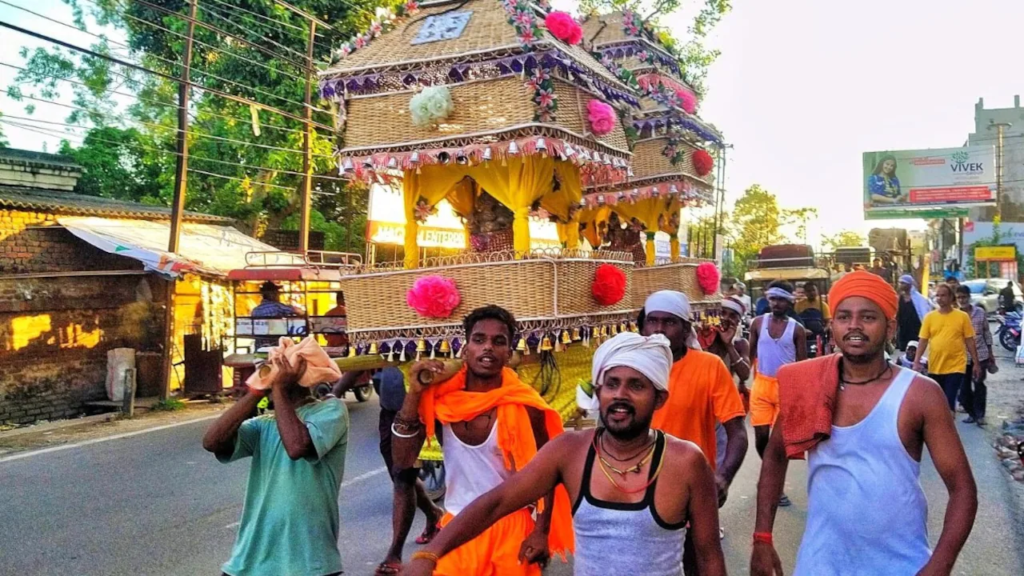Understanding the Kanwar Yatra: A Sacred Pilgrimage to Honor Lord Shiva
The Kanwar Yatra is an annual pilgrimage deeply revered by devotees of Lord Shiva, known as Kanvarias. It spans significant Hindu pilgrimage sites such as Haridwar, Gaumukh, and Gangotri in Uttarakhand, Ajgaibinath, and Sultanganj in Bhagalpur, Bihar. The main ritual involves pilgrims fetching holy water from the Ganges River and carrying it over hundreds of miles on their shoulders to offer at local Shiva shrines.
Origin and Symbolism
The word “Kanwar” originates from the apparatus used to carry sacred water, known as a Kanwar. While the Ganges River is a common water source, local equivalents are also used. The offering is dedicated to Lord Shiva, affectionately referred to as Bhola or Bhole Baba, signifying innocence. Pilgrims are called Bhola, emphasizing their devotion and simplicity in pilgrimage.
Historical Context
Although not extensively documented in ancient texts, the Kanwar Yatra gained prominence in the early 19th century when English travelers witnessed it in the northern plains of India. Initially a small affair, it grew significantly in popularity in the late 1980s.
Scale and Participants
Today, the Kanwar Yatra, particularly Haridwar, has become India’s largest annual religious gathering. Millions of devotees participate, traveling from states like Delhi, Uttar Pradesh, Haryana, Rajasthan, Punjab, Bihar, and others. The pilgrimage necessitates heavy security measures, including traffic diversions on national highways.
Global Impact
Beyond India, the tradition has extended to places like Mauritius, where Hindus pilgrimage to Ganga Talao on Maha Shivaratri, echoing the essence of the Kanwar Yatra.
Religious Significance
The Kanwar Yatra is linked to Hindu mythology, specifically the churning of the ocean of milk (Samudra Manthan) in the Puranas. It symbolizes devotion, purification, and offering penance to Lord Shiva, especially during the auspicious month of Shravana. Devotees observe fasts on Mondays, perform rituals, and undergo penance as part of their reverence.
Modern Practices and Support
While predominantly undertaken by men, some women also participate in the Yatra. Pilgrims predominantly travel on foot, though some use bicycles, motorcycles, or other vehicles. Along the journey, numerous Hindu organizations and voluntary groups provide essential services like food, shelter, medical aid, and facilities to hang the Kanvads (sacred poles).
Regional Variations and Festivals
In addition to the main Yatra routes, smaller pilgrimages occur to places like Prayagraj and Varanasi. The Shravani Mela at Deoghar in Jharkhand is another significant festival pilgrims bring holy water from Sultanganj to offer at the Baidyanath temple, covering a distance of 105 kilometers on foot.
Conclusion
Once pilgrims return to their hometowns, the Ganges water is used to ceremonially bathe Shivalingas, marking the completion of their pilgrimage with gratitude and devotion to Lord Shiva. The Kanwar Yatra remains a profound expression of faith, unity, and spiritual connection among millions of devotees across India and beyond.

